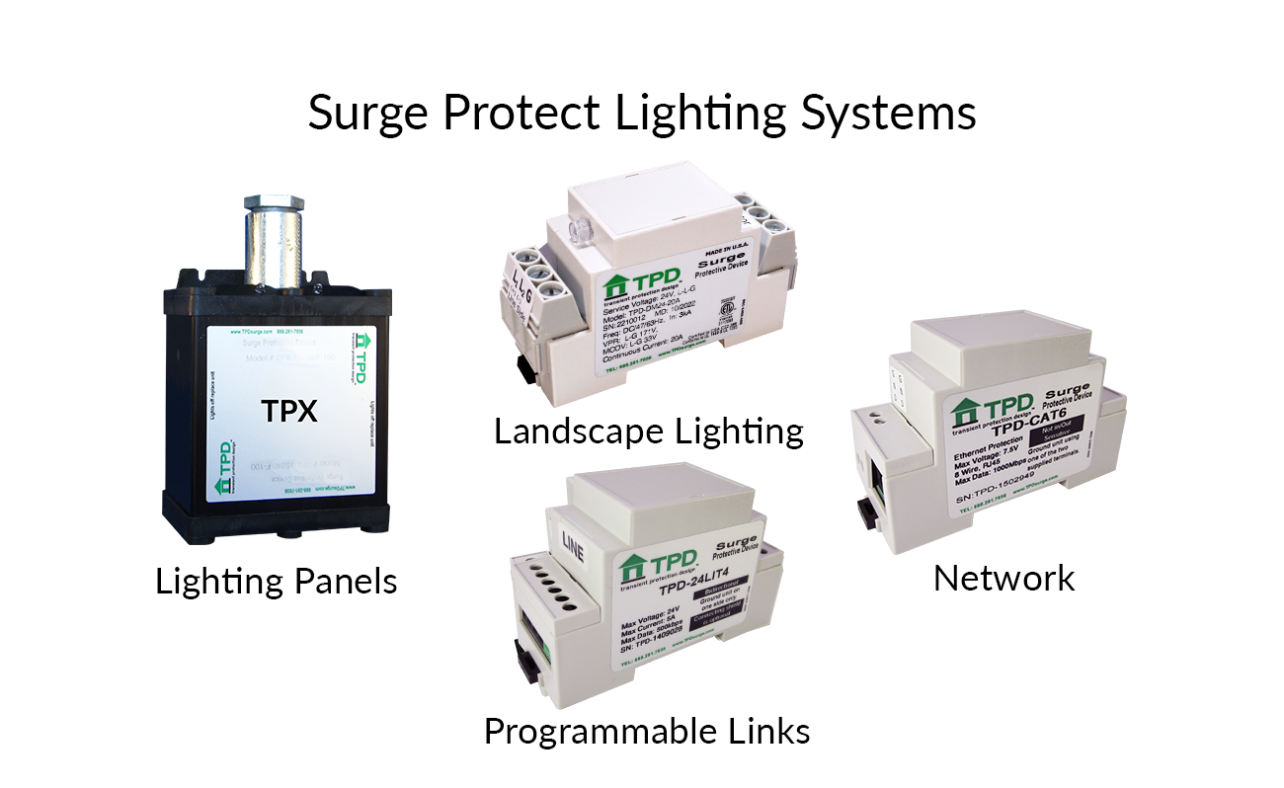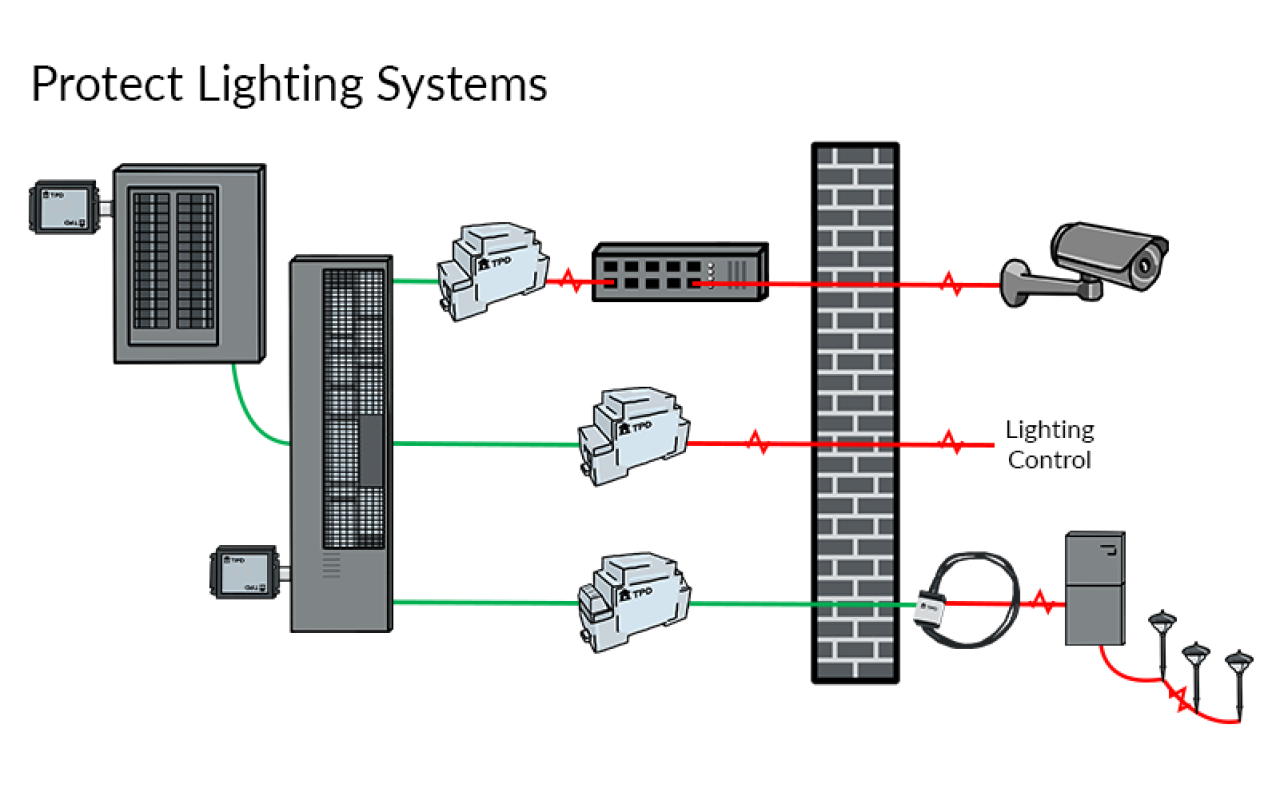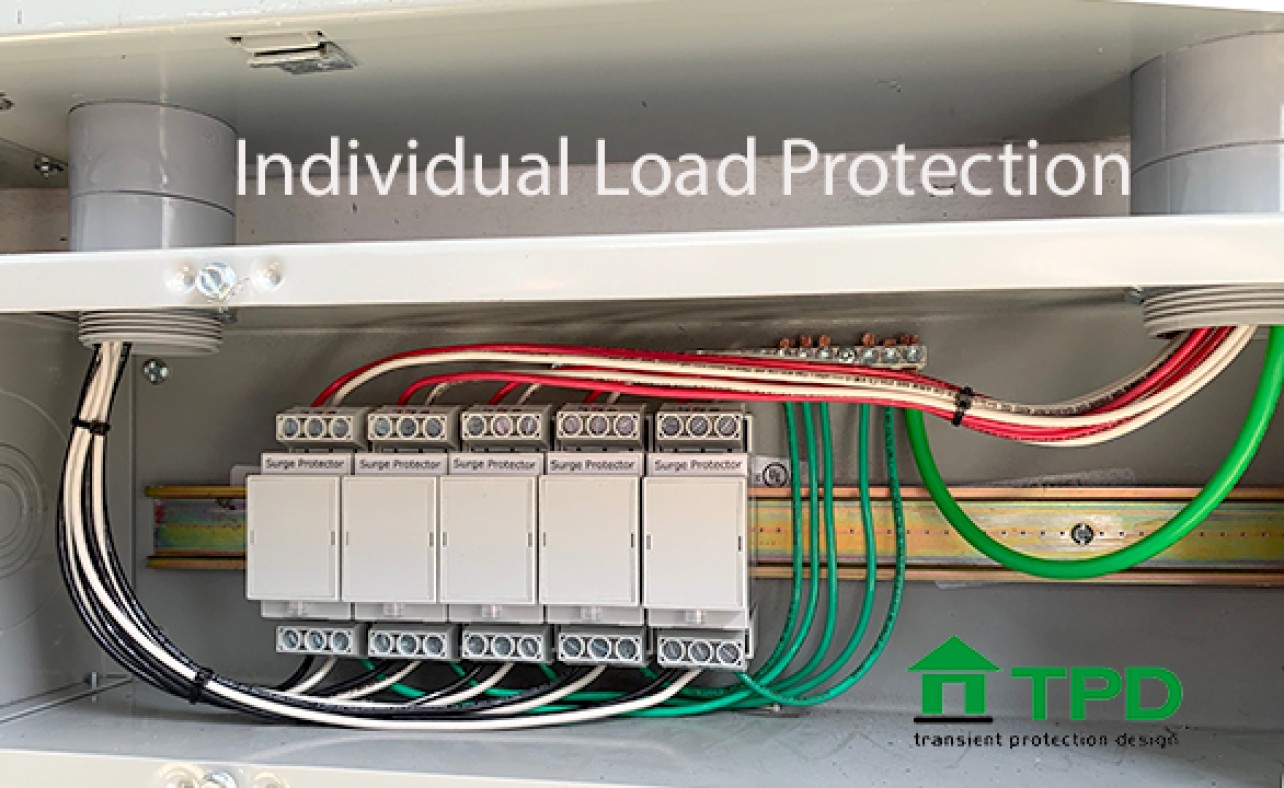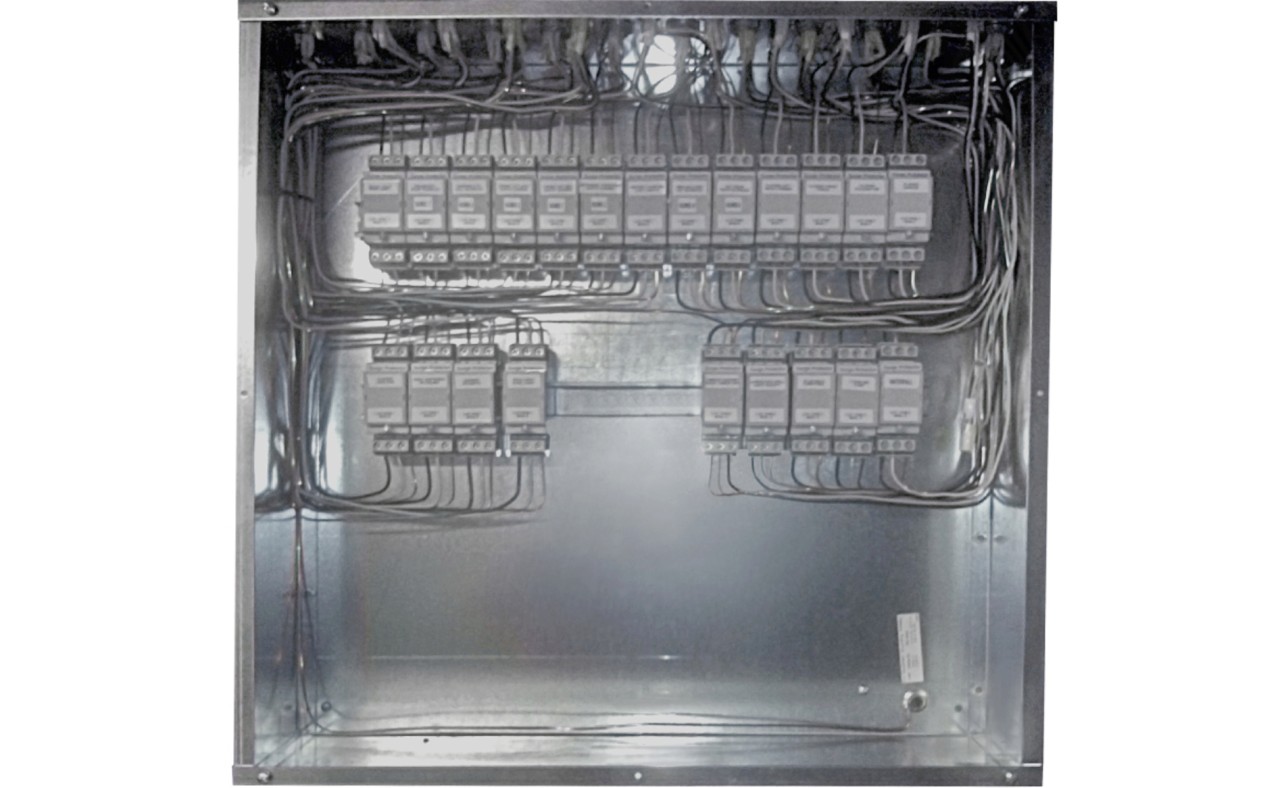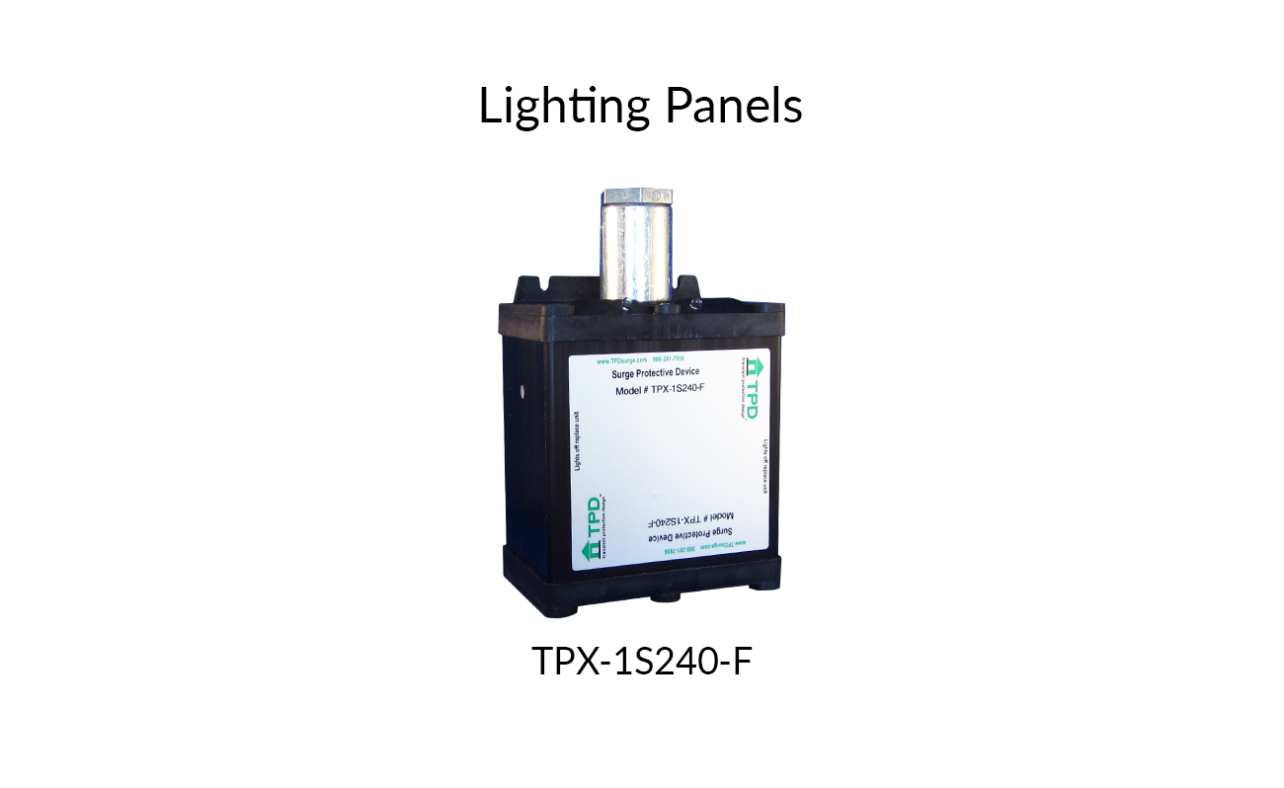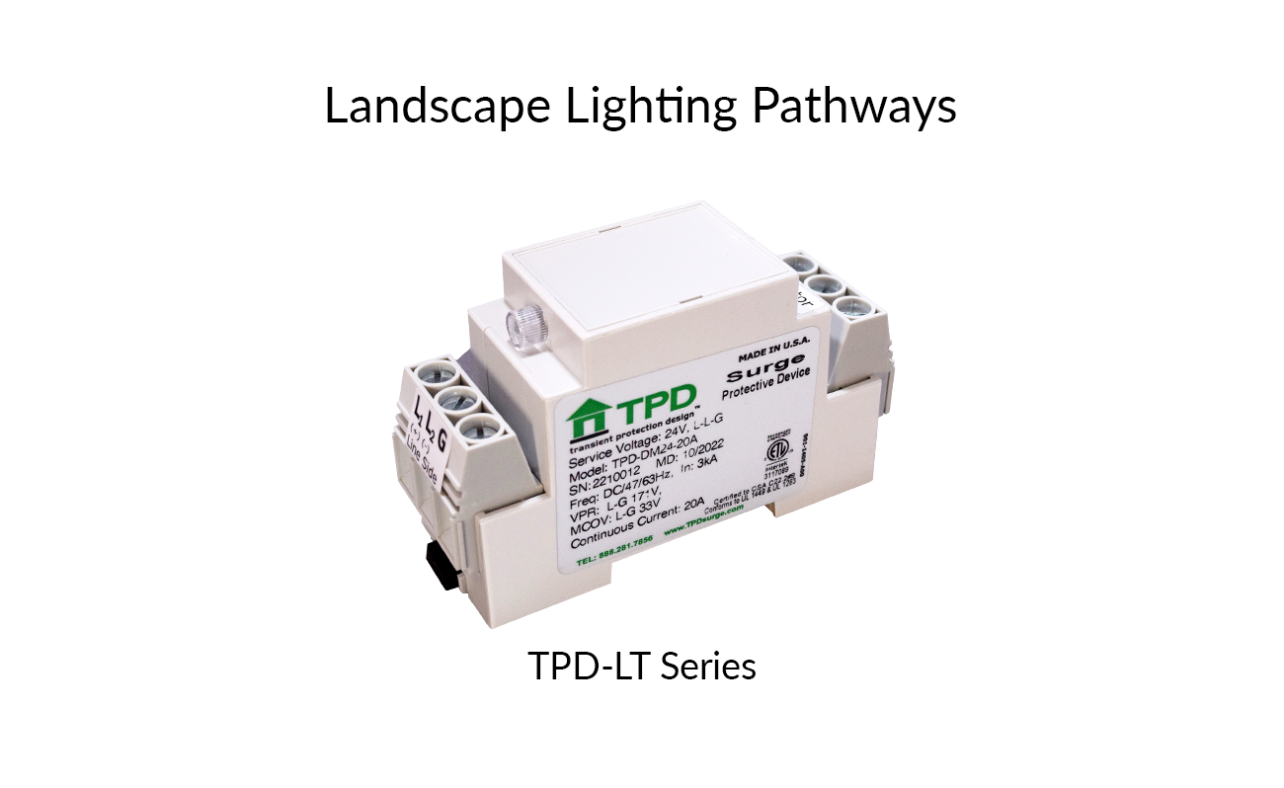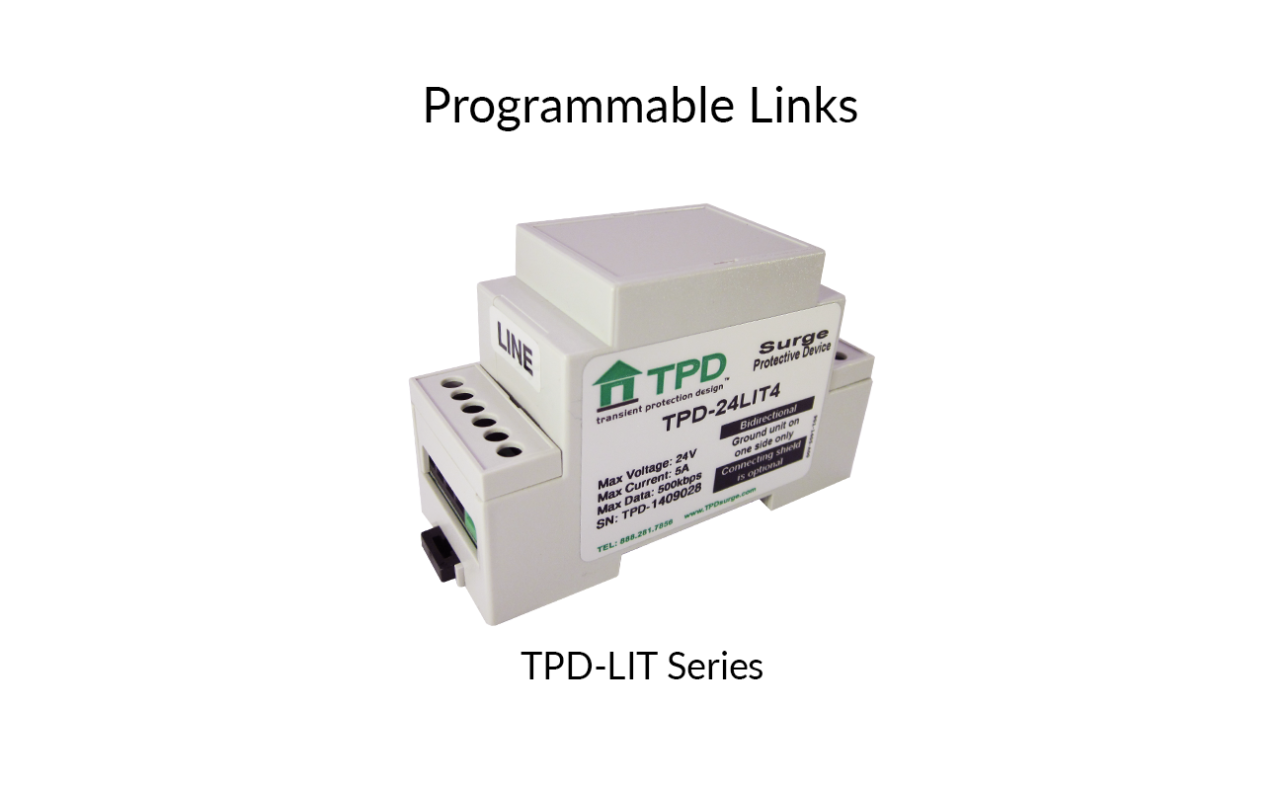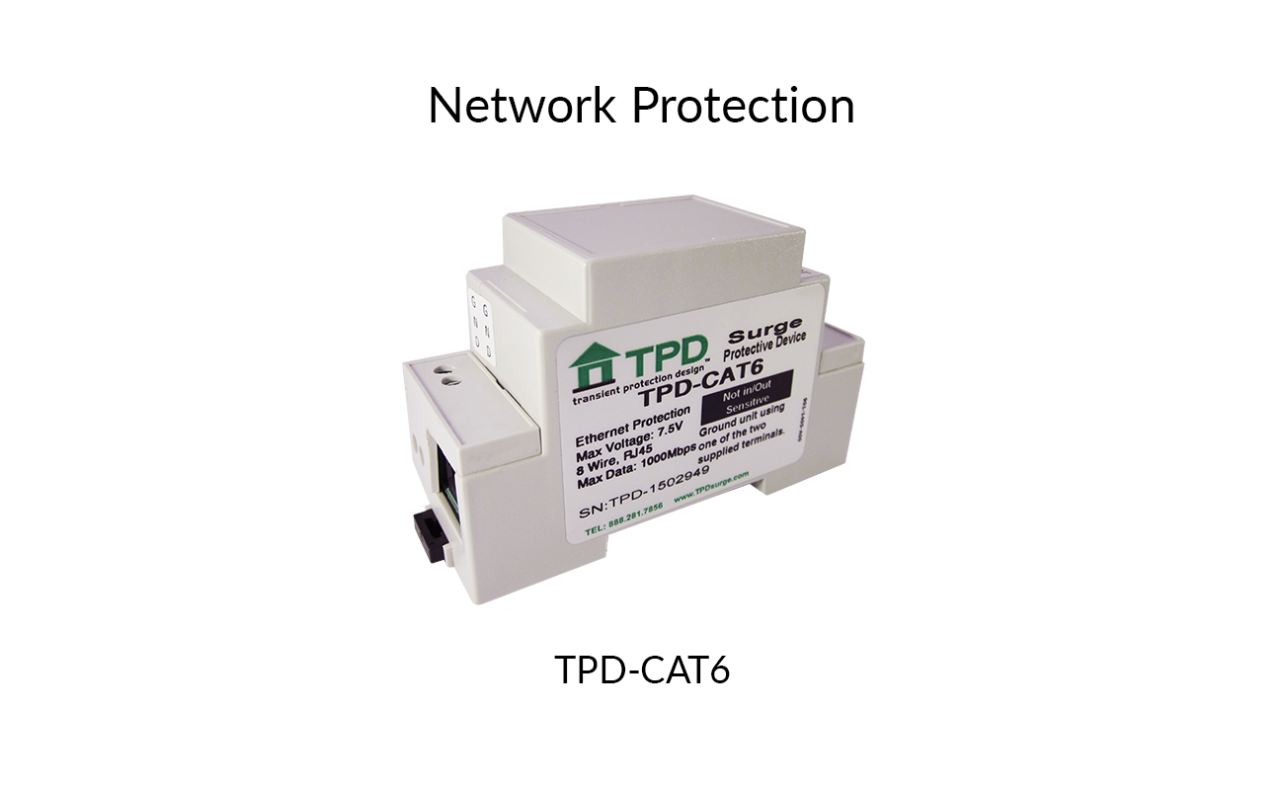Lighting System Surge Protection
Lighting system surge protection for systems manufactured by companies such as Lutron, Crestron, Control 4, Hinkley, and Litetouch is crucial for lighting systems in the modern home whose complex, integrated and interconnected nature which make them vulnerable to electrical surges. To ensure these systems function optimally and without interruption, robust surge protection is not just an option—it's a necessity. Protect your sophisticated lighting systems with TPD surge protection and maintain lighting systems' functionality, longevity, and the seamless experience they are meant to provide.
TPX-1S240-F Lighting Panels
TPD-LT120-20A Landscape Lighting Pathways
TPD-24LIT4 Programmable Links
TPD-CAT6 Network Protection
TPD eliminates transients & surges
which account for 85% to 95% of all
power issues, being the most common
and significantly the most damaging.
How to Surge Protect Lighting Systems
Surge Protect Lighting Panels: TPX-1S240-F
Surge protect lighting panels by installing a surge protector at the lighting panel. For additional protection, surge protect the breaker panel feeding the lighting panel. Layering surge protection is the best practice, and follows IEEE Recommended Practices for powering electronic loads.
Surge Protect Landscape Lighting: TPD-LT120-20A
Surge protect modules from landscape lighting pathways. If a lighting transformer is being used, the TPD-LT120-20A will protect the transformer from building power but would not protect the transformer from lightning outside. If surge protection from lightning at the transformer is needed, please see the TPD-24V3W series.
Surge Protect Lighting Control: TPD-24LIT4
Surge protect lighting control wires that go between buildings or are over 200 feet in distance.
Surge Protect Network Connection: TPD-CAT6
Surges can come from multiple directions into a network. The best practice for a lighting system is to protect its network feed, assuring ground potentials for this system are mitigated and eliminated.
The Importance of Lighting System Surge Protection
Uninterrupted Illumination
Lighting systems are indispensable for creating safe, inviting, and visually appealing environments. Surge-induced failures can compromise safety. TPD surge protection shields against electrical damage, ensuring uninterrupted illumination. Whether you're at home or in a commercial setting, surge protection guarantees consistent access to light, enhancing safety and productivity.
Protecting Valuable Equipment
Lighting systems encompass valuable components, including fixtures, LED drivers, bulbs, and control systems. Surge-induced damage can lead to costly repairs or replacements of these components. TPD surge protection guards the system and its components, reducing the risk of electrical damage and extending the lifespan of your lighting equipment in both residential and commercial applications.
Energy Efficiency and Sustainability
In both residential and commercial environments, efficient LED lighting systems contribute to energy savings and sustainability goals. Surge-induced equipment failures can lead to increased energy consumption, negating the benefits of energy-efficient lighting. TPD surge protection helps maintain energy efficiency, aligning with sustainability goals in both contexts.
Cost Savings
Repairing or replacing lighting equipment can strain budgets. Surge protection acts as a financial barrier against electrical damage, mitigating the risk of unexpected repair expenses. Whether it's optimizing your home's lighting or ensuring uninterrupted business operations, surge protection contributes to cost savings.
Operational Continuity
In commercial settings, lighting systems are integral to various operations, including safety, productivity, and customer experiences. Surge-induced failures can disrupt business activities and sporting events, impacting operations and customer satisfaction. TPD surge protection for lighting systems plays a pivotal role in maintaining operational continuity, ensuring consistent illumination for both businesses and clients.
Environmental Resilience
Sustainable lighting practices are essential for reducing environmental impact. Surge-induced equipment failures can result in increased waste. TPD surge protection helps maintain the resilience of lighting equipment, aligning with sustainability goals and ensuring the reliability of lighting systems.
Transient Protection Design surge protection for lighting systems is essential for preserving uninterrupted illumination, protecting valuable equipment, promoting energy efficiency, enhancing aesthetics and safety, achieving cost-efficiency, ensuring operational continuity, and promoting environmental resilience in both residential and commercial applications. It provides peace of mind, reliability, and beautifully lit indoor and outdoor spaces for homeowners and businesses alike, ensuring that spaces remain safe, inviting, efficient, and free from disruptions, day and night.

